How to Freeze Herbs
Learning the best way on how to Freeze Herbs can be a helpful tip to know for living a more simple life. Whether you have a full garden in your backyard or a small herb garden right on your window sill, you can still fill your freezer with fresh organic herbs.
Herbs you can use in soups, stews, sauces, and more. Once you start using your own home grown herbs, you might find your dishes taste more vibrant than before.
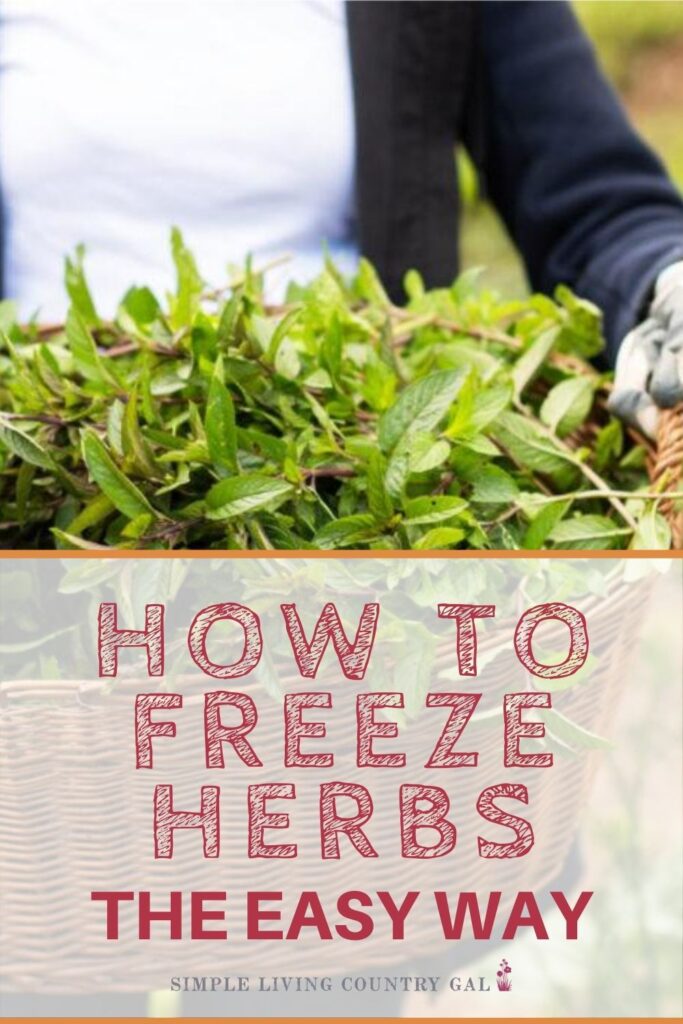
Growing herbs is a wonderful way to enjoy fresh flavors in all your dishes. The good news is that you can fill your kitchen with amazing herbs even if you are short on room to grow them. You can grow healthy, organic herbs in a convenient container garden, either indoors on your kitchen counter or outdoors on your back porch, regardless of how much or how little space you have.
Have you ever purchased fresh herbs from a produce stand or grocery store for a recipe? I don’t know what it is, but with herbs…fresh is just better. They smell better, they feel better, and yes, they taste better.
But oftentimes, when growing your own, you can easily end up with an abundance of herbs. Some herb plants grow tall and full, providing more herbs than you can possibly use before they start dying off.
But having more than you can use happens when you purchase them fresh as well. Herbs are often sold in large bundles when you only need a tsp or a sprig.
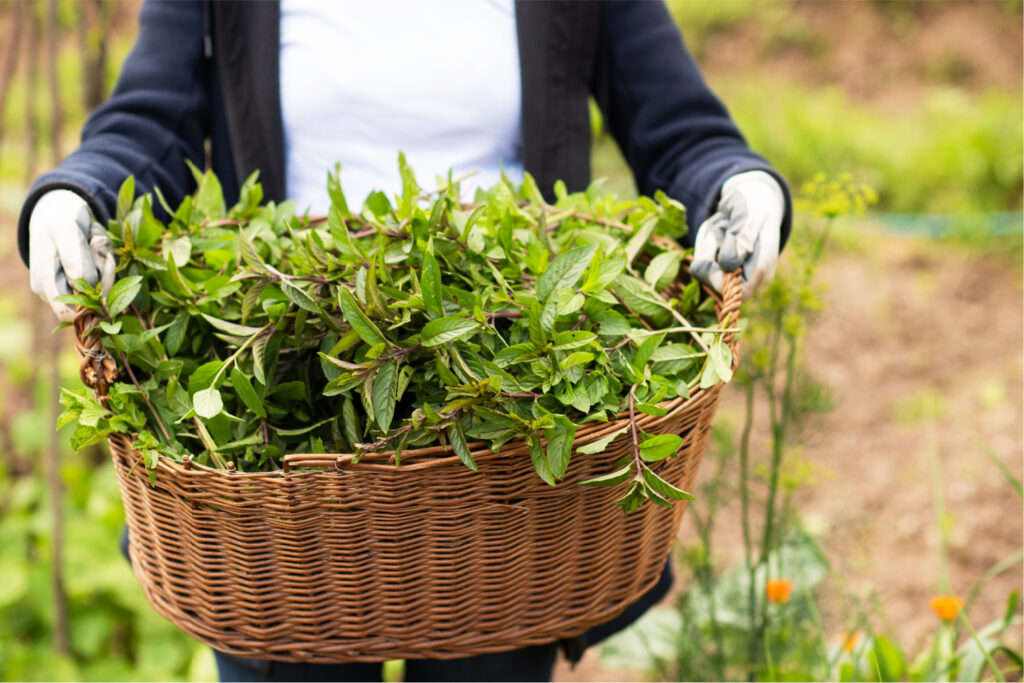
It seems so wasteful to just throw away the extra herbs, but what other choice do you have?
What can you do with extra fresh herbs?
Freezing herbs is a great way to preserve them for later. And remember how fresh tastes more amazing? Well frozen is the next best way to get that fresh taste all season long. Frozen herbs can be used later for cooking to add flavor to a variety of dishes, or even to make fresh-scented homemade gifts like candles and lotions.
SLCG PRO TIP: Another great place for herbs is out in the chicken coop. A few sprigs of thyme in your chicken’s nesting boxes and you will give a much better scent to your coop that you will love and your hens will too.
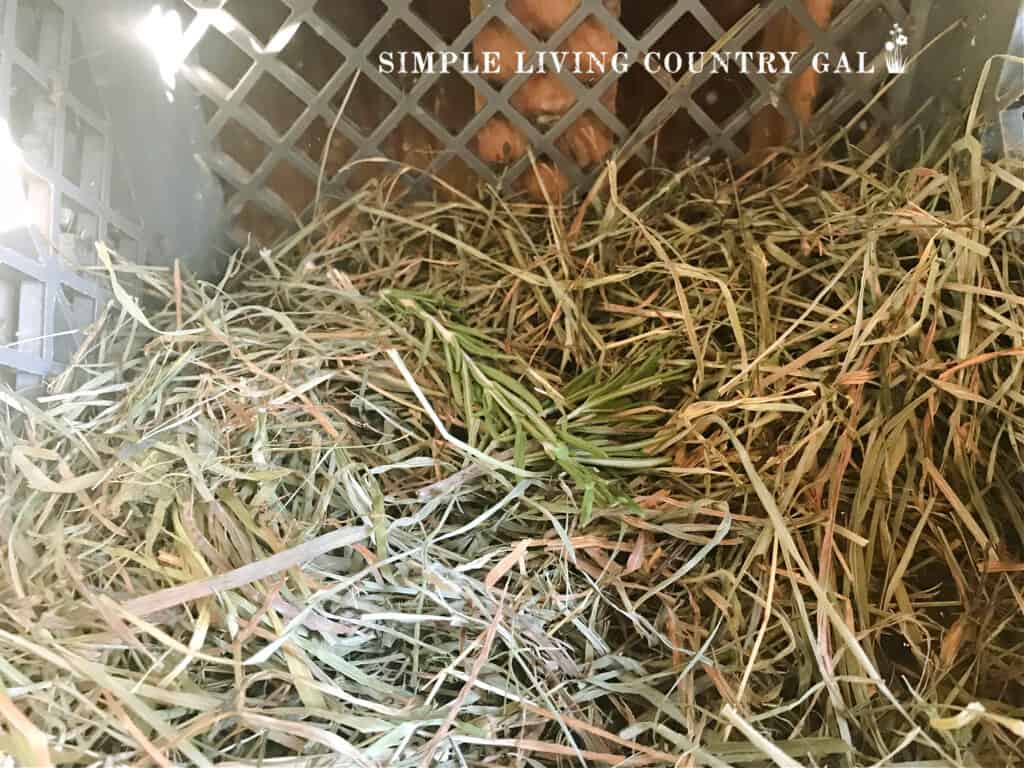
There are so many wonderful uses for fresh herbs, it would be a shame to waste them. Freezing fresh herbs will lock in all the flavors for later use, giving you a full supply of your garden whenever you need them.
How to Freeze Fresh Herbs
There are three common ways to freeze fresh herbs . . . in water, in oil, and on a cookie sheet. How you decide to freeze them will depend on how you want to use them later on. For instance, if you use them for cooking, you may want to choose the water or oil method of preserving your herbs.
If you’re going to use them for homemade gifts or you’re not sure what you will do with them later, the cookie sheet method works best. Let’s review each of these methods one at a time so you can better choose the best for you and the herbs you have on hand.
READ: HOW TO GROW HERBS IN POTS
How to Freeze Herbs in Water
Tender herbs like mint, parsley, and cilantro, are best frozen in water. The process is simple, and all you need is an ice cube tray and a zipper freezer bag. You can also use freezer containers to give you a nice, organized collection.
Remove the herbs from the stem, chop them if you plan to use chopped herbs later, and pack them in the wells of an ice cube tray. Fill each well about 1/3 to 1/2 full with each herb. Fill the packed wells with water and freeze until solid. Once frozen, you can remove the herb ice cubes from the tray and place them in a freezer bag until you’re ready to use them. Be sure to label the bag with the type of herb and the date it was frozen.
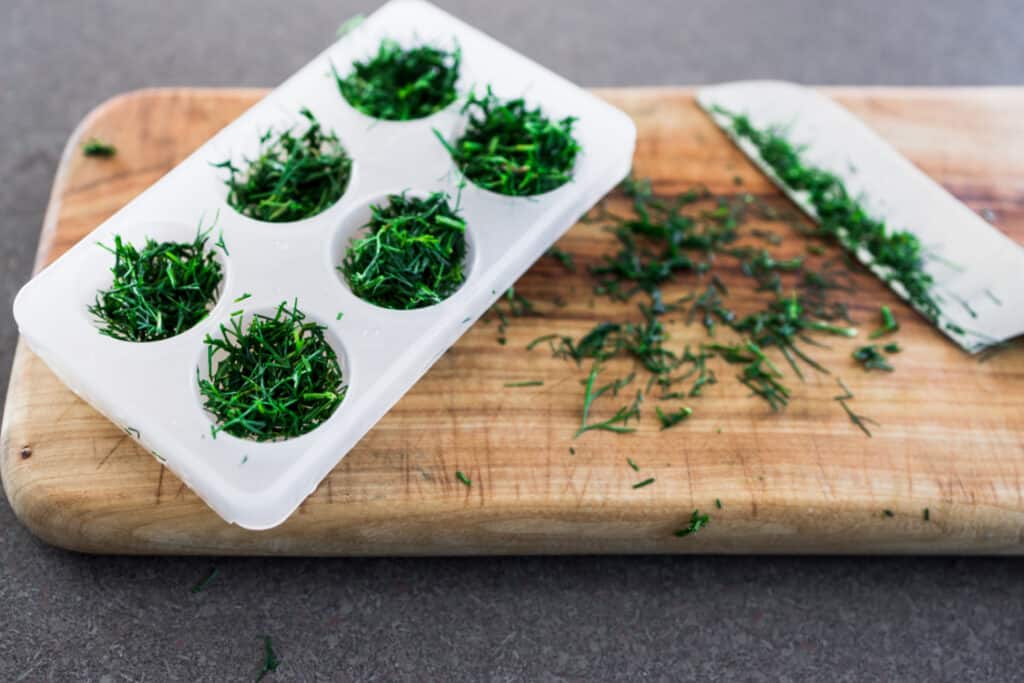
Freeze Herbs in Oil
Freezing herbs in oil is another popular method of preserving fresh herbs, especially if you plan to use them for cooking later. Olive oil and coconut oil work best for this method. If using coconut oil, be sure to melt it first for easier blending and/or pouring.
For best results, freezing in oil works best if you process the herbs first. Herbs like basil, oregano, and thyme work well with this method along with any kind of herb that you might use for sauces, soups, or other dishes.
First, remove the stems. Place the fresh herbs in a food processor with about a 1/4 cup of oil. Pulse until they’re fully chopped and blended. Using your ice cube tray, pour some of the oil and herb mixture into each well and freeze. Once frozen, you can remove the cubes from the tray and place them in a labeled freezer bag for long-term storage.
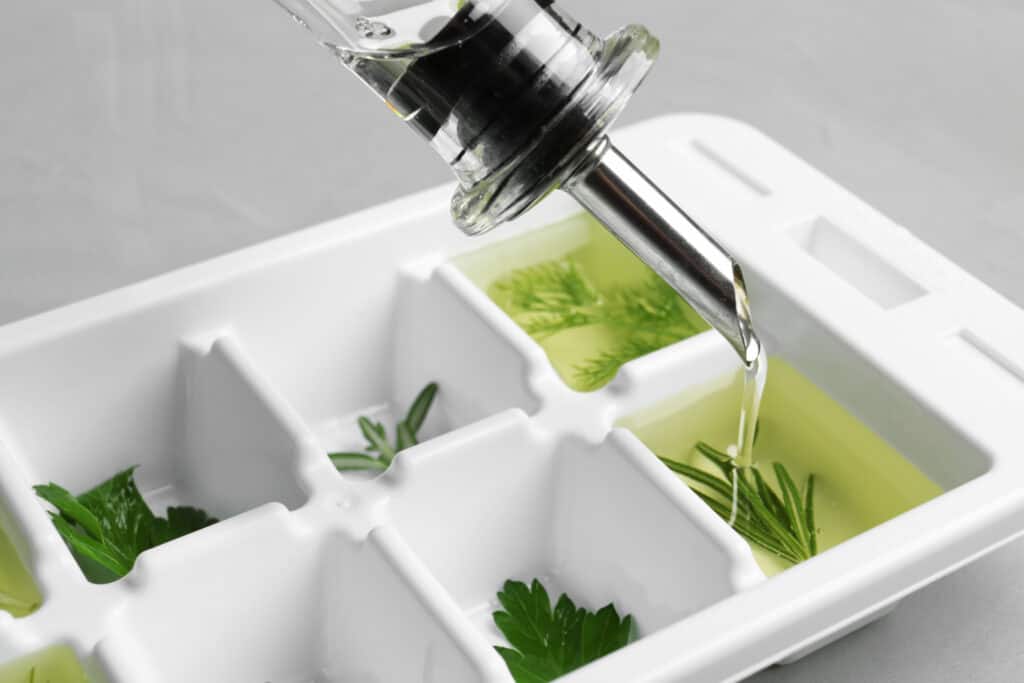
If you’d prefer to keep the leaves whole, you can freeze them, similar to the water method, by packing the leaves in the wells of the ice cube tray and filling them with oil instead of water.
One of the added benefits of freezing in oil is that if you want to use just a smidgen of herbs and oil instead of a whole cube, you can slice off a portion of the cube to use without having to melt down the entire cube.
Freezing Aromatics
You can also freeze citrus zest, grated ginger, and other fresh aromatics using either the water or oil method, so get creative. It will allow you to always have just a little bit of whatever you need on hand.
SLCG PRO TIP: If you have a small saucepan, you can toss a few cubes of citrus zest in along with the cinnamon stick and simmer on low for a lovely scent that will cosy up any room.
Freeze Herbs on a Cookie Sheet
Freezing herbs on a cookie sheet is a great way to keep the leaves whole, or you can chop them first, without the added oil or water. This method is a good choice if you’re not sure how you’ll use them later or you don’t plan on cooking with them so you don’t want water and oil. This will also prevent them from getting mushy.
As with the other methods, you’ll want to strip the leaves from the stems. You can leave the leaves whole or chop them into small pieces, then spread them out onto a cookie sheet. Place the cookie sheet in the freezer for about an hour to allow the leaves to freeze, then remove them from the cookie sheet and place them in a freezer bag. You’ll want to make sure you press all the air out of the bag to preserve them and label and date the bag. This will help you to always know what you have.
This method freezes the leaves separately, allowing you to remove exactly the amount you need for a recipe.
Regardless of which method you choose for freezing herbs, you will want to consider how you will use the herbs later. If you want them finely chopped to add to a recipe, make sure they are finely chopped before freezing. If you want to add them to a sauce or dip, you may want to pulse them in a food processor before freezing. One of the bonus benefits of preserving herbs how you plan to use them is having one less step you will need to do later on.
Herb Freezing Tips
The best tip I can give you when freezing herbs is to think about how you want to use your favorite herbs in the future when you decide how to freeze them. But, along with that, it is important to know that some herbs may have additional ways to freeze them for later use.
How to Freeze Fresh Basil
I just love basil, mainly because of its wonderful scent, but also because you can use basil for so many things, freezing it in a variety of ways allows you more versatility later. If you plan to use basil for pesto, pulsing it in the food processor with oil is the best method. If you’ll use it to add flavor to iced tea or lemonade, freezing it in water to make ice cubes will work best. If you plan to use whole leaves for a salad or to top a pasta dish, the cookie sheet method is probably your best choice.
You can also blanch basil to keep the leaves from shrinking up.
How to Blanch Basil Leaves
- Simply remove the leaves from the stem and blanch them in boiling water for about 2 seconds.
- Immediately transfer the leaves to an ice bath.
- Remove them from the ice, dry them off completely.
- Place the leaves in a freezer-safe container with a layer of wax paper or parchment paper between them.
How to Freeze Fresh Cilantro
Cilantro freezes well by either the water or by the oil method. If you prefer to keep sprigs whole, you can also place a few sprigs at a time into a freezer bag, push out all the air, and place them in the freezer. Frozen cilantro is best used in cooked dishes and not in salads or salsa because they will get a bit mushy once thawed.
How to Freeze Fresh Rosemary
Rosemary is a sturdy herb that makes it a wonderful choice for freezing. There are several methods that work well including both the water and oil methods. Another way to freeze rosemary is to use the herb roll-up method. This is where you place a few sprigs in a freezer bag and force the air out. Roll from the base to the top to make sure there’s as little air as possible around the rosemary. This will help to ensure your herbs are the freshest they can be when thawed.
To make it easier to use your rosemary later and measure out exactly what you need for a recipe, use the cookie sheet method. Lay individual rosemary clippings onto a cookie sheet and place the entire tray into the freezer. Once frozen you can then place in an airtight bag, forcing any air out to ensure they last. Do not forget to label and date your bags before placing them into your freezer. By freezing individually, this will allow you to measure the exact amount of rosemary leaves you need later on.
How to Freeze Fresh Dill
Dill can be used in many dishes; everything from potato salad to dips to sauces. You do, however, often need a specific amount which means you rarely need it in water or oil. The best freezing method for dill is the cookie sheet method, laying the sprigs out on a cookie sheet, freeze them, then placing them in a freezer bag, and rolling it up to get out excess air. This will allow you to measure out the dill you need for various recipes later on.
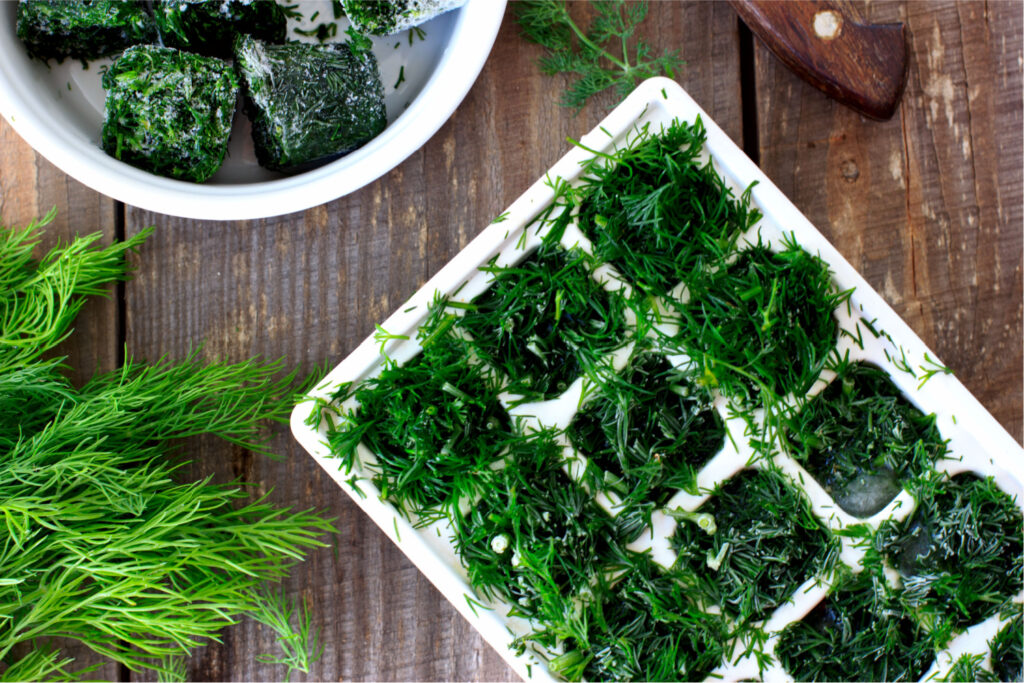
How to Cook with Frozen Herbs
There are so many ways to cook with herbs, and using frozen herbs will ensure that you always have herbs readily available. Here are some simple and fun incorporate to use those amazing herbs in your everyday cooking.
Sprinkle Herbs Over Hot Food
If you want to add a little extra flavor to a dish, sprinkle the herbs you froze using the cookie sheet method over your hot dishes. They’re a great addition to scrambled eggs, chicken dishes, stews, or even rice.
Substitute for Fresh in a Recipe
Depending on the recipe, you can use your frozen herbs right out of the freezer and add them to your recipe for an infusion of flavor.
Add herbs frozen in oil or water to sauces, place herbs in cubes of oil to a baking sheet when roasting vegetables, or sprinkle herbs frozen using the cookie sheet method to meat dishes or over vegetables.
Use Herbs in Rubs
If you want to make an amazing meat or vegetable rub, you can add herbs that you froze using the cookie sheet method. Sprinkle them directly into your rub mix frozen.
Once they thaw, your rub will be ready to use.
Add Frozen Rosemary to Homemade Bread
If you’re making a fresh loaf of bread, add some frozen rosemary to the dough for added flavor.
You can also brush the top of the loaf with oil and sprinkle with frozen rosemary and a little sea salt.
Add to Salads
Herbs are a great way to add extra flavor to both hot and cold salads.
Add dill to potato salad, rosemary to a vinaigrette dressing, or basil to a chicken salad. It’s best to use herbs that have been frozen with the cookie sheet method to avoid extra liquid in your salad.
If you’re using them in a cold salad, thaw them first.
Add to Sauces
Adding herbs to sauces allows you to quickly and easily change the taste and bring more flavor.
Depending on the type of sauce you’re making, any of the freezing methods will work. You can add herbs frozen in oil to a tomato sauce. If they’re frozen in water, they’re a great addition to a chili sauce. Or you can sprinkle in exactly what you need using herbs that have been frozen with the cookie sheet method.
Sauces are a great way to experiment with frozen herbs.
Make Your Own Herb Butter
Herb butter is becoming increasingly popular and a simple way to upgrade a normal butter to one with added flavor.
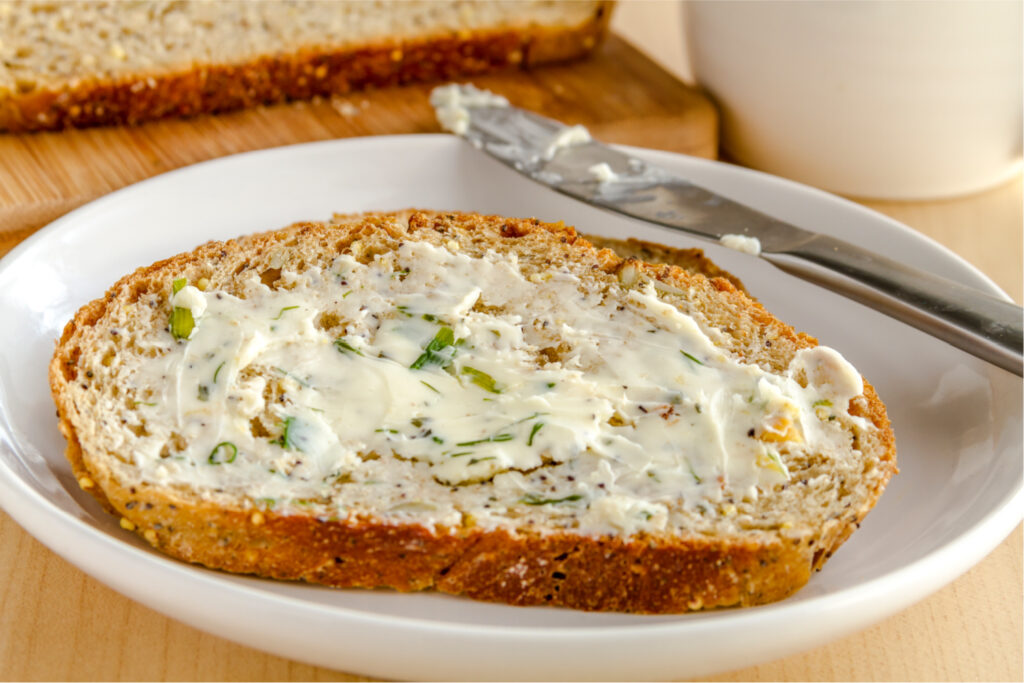
How to make herb butter:
- Use herbs that have been frozen with the cookie sheet method and thaw them completely before adding them to the butter to avoid any extra moisture.
- Let the butter soften to room temperature, then stir in the herb of your choice.
- Spoon the herb butter into a ramekin or form using a mold and refrigerate until it becomes solid again.
- Place a pat of herb butter on a grilled steak, use it to butter a warm roll, or mix it into roasted vegetables for an easy flavor addition.
I just love how there are so many ways to use frozen herbs in your kitchen. The best part is my chance to get creative! Test out all the freezing methods to see which works best for you and how you’ll be inspired to use them.
Herbs are so versatile. You can grow a bountiful herb garden, then freeze or dry them to use in your kitchen or to make homemade gifts. Freezing herbs allows you to use them all year long, even when they’re out of season, to bring fresh flavors and scents to everything you make.
Learning the best way on how to freeze herbs means that none of your harvests will go to waste.
